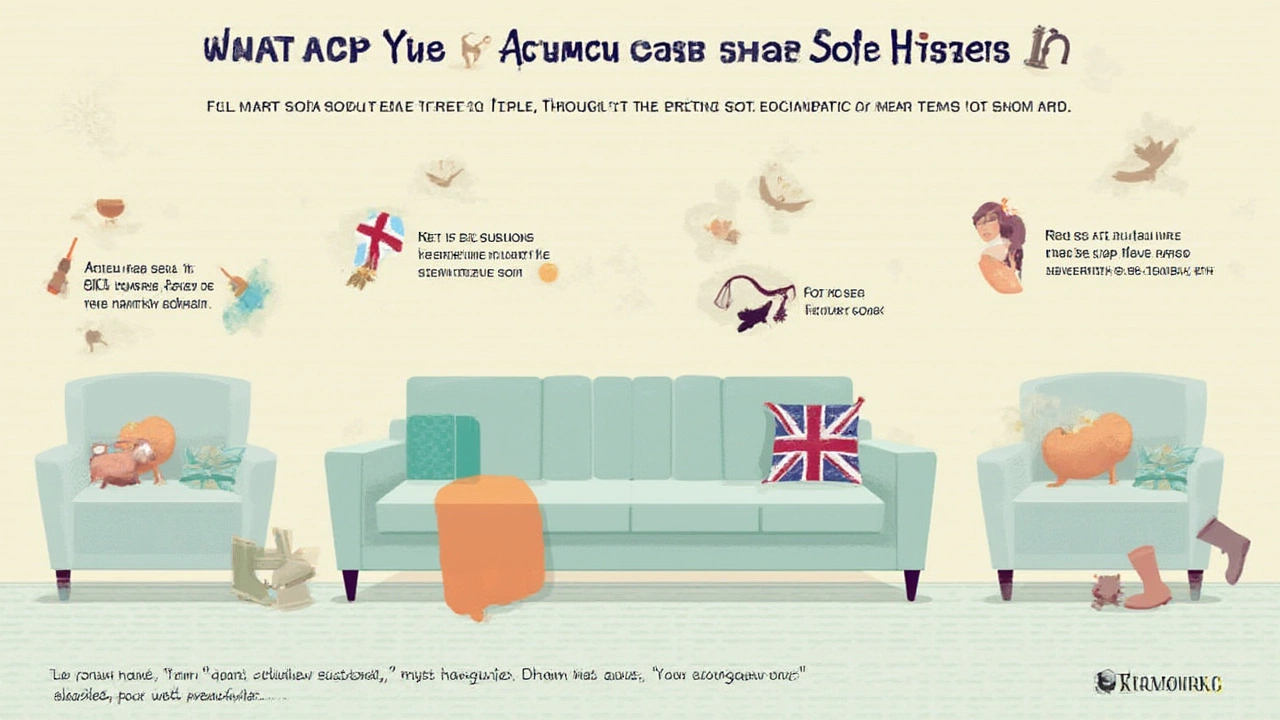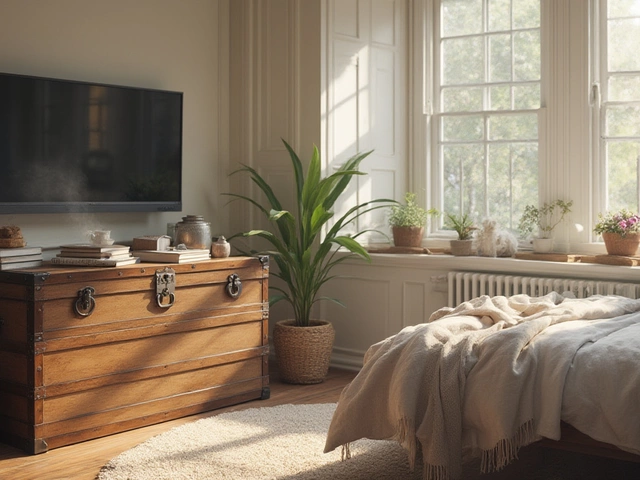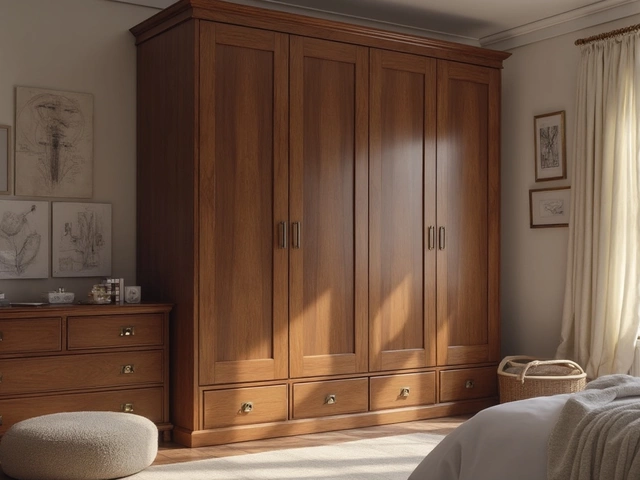Picture this: it's Saturday morning, and you've just flopped onto your new bargain sofa with a cup of coffee. Sure, it didn’t cost as much as your last car, but you can't help but wonder how long your backrest buddy will stick around. Most folks expect a cheap sofa to last at least a couple years, but the real answer is full of surprises.
What Makes a Sofa 'Cheap'—And Why That Matters
Let’s be real: not all sofas are created equal. When people talk about a 'cheap' sofa, they're often referring to anything under $500, sometimes creeping toward $800. What really makes it cheap, though, isn’t just the price. It’s about the stuff inside and under the fabric: lower-grade frames (think particleboard or softwoods), basic foam instead of memory foam, and sometimes hardware that feels like it came from a child’s toy set. Even the upholstery is usually synthetic or thin cotton, with seams you could probably pop if you sat down too hard.
So why do people still buy them? Because—let's face it—sometimes your wallet is in charge. Maybe you just moved out of your parents’ place, or you hate the idea of your toddler wiping peanut butter on a $2,000 sectional. Budget sofas promise comfort and style at a price you can live with—even if it means some trade-offs you’ll notice pretty soon. Honestly, once you see a sofa listed online for less than the cost of a fancy dinner, you know you’re probably not getting heirloom quality. One survey by Furniture Today found nearly half of all buyers under 30 chose sofas under $800, knowing full well they might be temporary.
Most of the time, cheaper sofas use engineered wood, stapled frames, or MDF (that’s just compressed wood shavings, by the way). Cushions are typically made from basic polyurethane foam, which flattens faster than a pancake at a diner. Don’t expect real leather, either—more likely, you’ll be sitting on thin polyester or “bonded leather” (that’s scraps glued together, not a full hide). All this adds up to a lower upfront cost, but compromises the couch’s life expectancy. Durability just isn’t in the DNA.
But, there are exceptions. Sometimes a store clears out last year’s models at 'cheap' prices just to make room. If you’re handy and up for DIY repairs, you might squeeze a few added years out of a bargain. Most times, though, you’re trading staying power for a sweet price tag. And trust me, you’ll feel it after a year of sitting, flopping, and napping.
A Realistic Lifespan: How Many Good Years Can You Expect?
So, how long should you expect that discount sofa to stick around—a year, two, maybe five if you’re lucky? Most people are shocked by the numbers. The True Home Report found that sofas under $600 have an average lifespan of 2-5 years. Even with careful use, it’s rare to see a budget couch last longer than seven years. Most cheap sofas start showing their age at around 18-24 months: saggy cushions, loose arms, and wobbly legs come with the territory.
It’s not just the frame—it’s the daily grind your couch puts up with. Every flop, every nap, every snack attack slowly whittles away at the cheap foam and lightweight supports. Spills, sun fade, and even the family cat can take a toll. Surprising, right? One crazy fact: Animal rescue workers have a nickname for cheap faux leather—'cat shredder.' A single scratch can peel back layers like a banana. Actual leather might age with dignity, but bonded leather splits and flakes, sometimes after just 18 months of use.
If you live alone or treat your sofa gently (read: no wild kids, few house parties, pets kept at a distance), you may squeeze the higher end of the range, maybe five to seven years. Got a family, pets, or a love of late-night movie marathons? You might see wear in just two years. Warranty info tells a story too: high-end couches often get five- or ten-year frame warranties. Cheap sofas? Sometimes one year—if that. That’s not a typo.
Ever notice rental apartments always have those 'functional but tired' couches? Landlords know: a cheap sofa is short-term seating. If you plan to use your couch as a guest bed, expect even less time on the clock. Foldouts often use the cheapest mechanisms and mattresses, and they break or sag even faster. So, if the price seems too good to be true, it probably means you’ll be shopping again before you know it.

What Causes Cheap Sofas to Wear Out Early? Looking Under the Cushions
Plenty of things grind down a cheap sofa, but it all starts with what’s inside. The frame is the backbone, and cheap sofas often cut corners with thin plywood or particleboard. If you ever pick up a corner and hear it creak, that's the sound of shortcuts catching up to you. Over time, those small creaks turn into full-on wobbles. If a couch feels light when you pick it up, that’s usually not a good thing—less weight means less sturdy wood.
Let’s talk cushions. Quality sofas use high-density foam (more than 1.9 pounds per cubic foot), but cheap sofas dip down to 1.5 pounds or lower. This stuff flattens fast. Ever notice your favorite seat getting permanently sunken? That’s cheap foam doing what it does best—giving up. And the webbing or springs below are often just as skimpy, so every bounce is a countdown to a sagging seat cushion.
Upholstery is a sore spot, too. If it's thin or loosely woven, you’ll see pilling, snags, or stains that never really come out. Polyesters and blends can look good at first but may show obvious signs of wear within months. Accidentally spill coffee? With thin fabric, that stain’s probably permanent. Add pets or rowdy kids, and you’re in for an uphill battle. Pets love to scratch, chew, or shed, and most affordable fabrics don’t stand a chance. You might actually find the label 'pet-friendly' on some cheap sofas as nothing more than empty marketing.
Bad assembly plays a role, too. Lots of flat-pack sofas are shipped in parts to save on delivery costs, but that means more joints and screws instead of strong, glued connections. Every screw is another way for a couch to wriggle loose over time. If the cushions are attached by nothing more than Velcro, don’t count on them hugging the seat for long. Even the feet of cheap sofas can strip or break, especially if you move them often or have uneven floors.
Keep an eye out for how the cushions attach. Loose cushions can get lumpy, slip off, or lose their zippers. If you’ve ever had the weird experience of hunting for a lost remote under a hard-to-lift couch cushion, join the club. These little problems chip away at your sofa’s lifespan day after day.
Smart Moves: How to Make Your Cheap Sofa Last Longer
If you’re working with a tight budget, you can still stretch your sofa’s lifespan, but you’ll need to be proactive. First rule: treat your sofa like it’s worth way more than it is. Regular cleaning really matters, especially for cheap upholstery. Most stains set super fast, so tackle them right away with gentle soap and water, or a fabric-safe stain remover. Test first on a hidden corner just in case your sofa’s dye reacts weirdly—sometimes budget sofas have surprise color runs.
Rotate your cushions. Even if they aren't reversible, flipping or switching them around helps spread out the wear. If the cushions are attached, you can still shuffle which seat you use most. Sitting in a different spot every now and then keeps the indentations more even and can squeeze out a few more months before it starts looking slouchy.
If you have pets, consider a washable slipcover. Not the prettiest solution, but it’ll save the upholstery from claws and fur. Same goes if you have kids—trust me, Melanie and I learned it the hard way after grape juice made a permanent mark that no cleaning trick could erase. Cheap sofas with darker fabrics hide stains and scuffs better, too, so don’t default to light beige if you’re disaster-prone.
Check the frame every now and then. If you hear squeaks or feel new wobbles, tighten any screws you can reach, and add furniture glides to the bottom if your floors are rough. Taking a minute to reinforce loose joints with extra brackets or wood glue pays off, and you don’t need to be a pro—just a little patience and a screwdriver.
Lastly, try not to overload it. Don’t let anyone jump across the couch or pile on with friends during movie nights. Those Instagram-worthy 'sofa forts' are fun—until the frame gives way under all the blankets and giggles. And keep it out of direct sunlight if possible: sun makes fabrics fade and foam lose bounce faster than you’d expect.
If you really want value for your money, scout secondhand stores and estate sales. Sometimes someone else’s “old” couch is built much sturdier than a new bargain model—plus, real wood frames almost always outlast modern pressed wood. Just check for smells and make sure springs are still springy.

Do You Get What You Pay For? Cheap Sofas vs. Mid-Range Alternatives
Here’s where the rubber meets the road: is a cheap sofa even worth the risk, or should you bite the bullet and spend a little more? A $300–$700 sofa might get you through a lease, a college dorm, or your first apartment with few worries. The problem isn’t always right away—it’s in the long haul. Once you add up the yearly cost (amortized over just two years), you’ll sometimes realize you could’ve paid a bit more upfront and skipped the hassle of replacing it so soon.
Here’s a wild stat: a study from Smart Furnishings compared the cost-per-year of ownership for cheap sofas versus mid-range ($1,000–$1,500) ones, and found mid-range options often outlasted three budget couches. That means you could actually save money (and a few trips to the curb) by spending a bit more upfront. Plus, you cut down on landfill waste, because let’s face it: nobody’s passing down a particleboard couch to their grandkids.
Mid-range sofas almost always have sturdier frames, better springs or webbing, and tougher fabrics. The foam is denser and bounces back longer. Many stores even let you spot the difference on the spec sheet: hardwood like oak or beech vs. larch or pine; 2.0+ density foam vs. the lowest legal grade; kiln-dried, dowelled joints vs. tacky hardware. And they come with longer warranties—sometimes five or ten years instead of one. This tells you a lot about how manufacturers expect their products to hold up.
That said, not everyone needs a sofa to last a decade. If you’re moving soon, changing apartments every year, or just don’t want the headache of babysitting good furniture, cheap sofas make sense—and can look just as sharp for a short time. Just don’t expect miracles. Plan for a refresh after a couple years, or be ready for some clever repairs and upgrades along the way.
When you shop, look past just the color or shape. Dig for frame details, ask about the foam density, check the upholstery’s rub count (how many times it can be sat on before it wears down—a number over 15,000 is decent for cheap sofas). Always give the demo couch a quick shake, and if you’re shopping online, hunt for reviews that mention real timelines for wear and tear. Sometimes, the best life hack is reading through the brutally honest one-star reviews.



